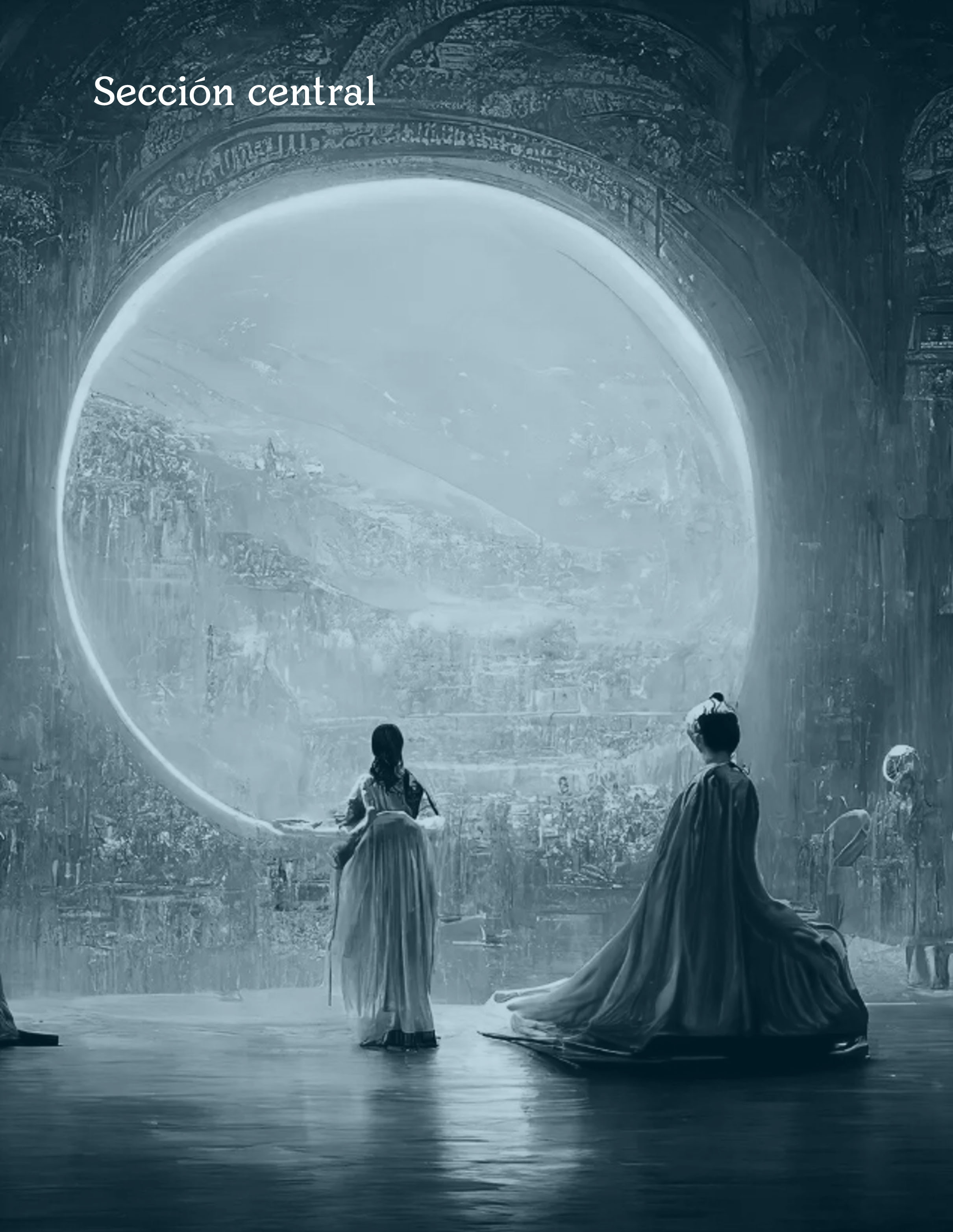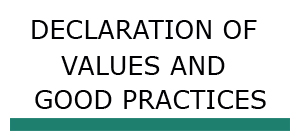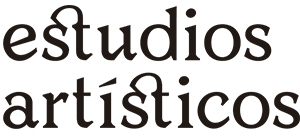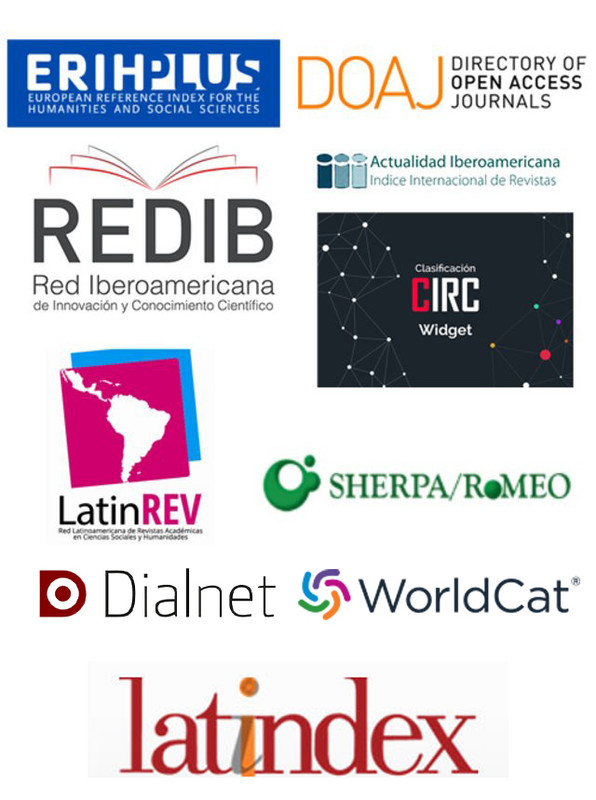
DOI:
https://doi.org/10.14483/25009311.21833Published:
2024-03-27Issue:
Vol. 10 No. 16 (2024): Enero-Junio 2024Section:
ArtículosUnveiling the Creation of AI-Generated Artworks: Broadening Worringerian Abstraction and Empathy Beyond Contemplation
Revelando a Criação de Obras de Arte Geradas por IA: Expandindo a Abstração e a Empatia Worringeriana Além da Contemplação
Keywords:
abstracción, empatía, arte, creación, inteligencia artificial, Worringer (es).Keywords:
Abstraction, empathie, art, creation, artificial intelligence, Worringer (en).Keywords:
abstração, empatia, arte, criação, inteligência artificial, Worringer (pt).Downloads
Abstract (es)
En su obra pionera, Abstracción y empatía, Wilhelm Worringer profundizó en las complejidades de algunas obras de arte abstracto y figurativo, afirmando que evocan distintos impulsos en el público, específicamente, los impulsos hacia la abstracción y la empatía. Este artículo afirma la presencia de evidencia empírica que apoya la extensión de los conceptos de Worringer más allá del ámbito de la apreciación del arte al dominio de la creación artística.
En consecuencia, se postula que la abstracción y la empatía sirven como principios fundamentales que guían la producción tanto del arte abstracto como del figurativo.
Esto tiene una importancia particular en el siglo XXI, donde la inteligencia artificial (IA) asume un papel creativo que estaba ausente en la formulación inicial de la teoría de Worringer. Por lo tanto, este artículo postula que la IA alberga inherentemente una predisposición para la generación de arte abstracto, debido a sus orígenes y funcionamiento no vivos e inorgánicos.
Abstract (en)
In his groundbreaking work, Abstraction and Empathy, Wilhelm Worringer delved into the intricacies of various abstract and figurative artworks, contending that they evoke distinct impulses in the human audience—specifically, the urges towards abstraction and empathy. This article asserts the presence of empirical evidence supporting the extension of Worringer’s concepts beyond the realm of art appreciation to the domain of art-making. Consequently, it posits that abstraction and empathy serve as foundational principles guiding the production of both abstract and figurative art. This holds particular significance in the 21st century, where artificial intelligence (AI) assumes a creative role that was absent during Worringer’s initial formulation of his theory. Thus, this paper postulates that AI inherently harbors a predisposition for the generation of abstract art, owing to its non-living and inorganic origins and functioning.
Abstract (pt)
Em seu trabalho pioneiro, Abstração e Empatia, Wilhelm Worringer mergulhou nas complexidades de algumas obras de arte abstratas e figurativas, afirmando que elas evocam impulsos distintos no público, especificamente, impulsos em direção à abstração e à empatia. Este artigo afirma a presença de evidências empíricas que sustentam a extensão dos conceitos de Worringer para além
do âmbito da apreciação artística para o domínio da criação artística. Consequentemente, postula se que a abstração e a empatia servem como princípios fundamentais que orientam a produção tanto da arte abstrata quanto da figurativa. Isso é de particular importância no século 21, onde a inteligência artificial (IA) assume um papel criativo que estava ausente na formulação inicial da teoria de Worringer. Portanto, este artigo postula que a IA abriga inerentemente uma predisposição para a geração de arte abstrata, devido às suas origens e funcionamento não vivos e inorgânicos.
References
Arriagada, L. (2021). Artistas mecánicos: Una mirada a la capacidad estética de máquinas y algoritmos desde la música pop y el pop art [Mechanical Artists: A Look at The Aesthetic Capability of Machines and Algorithms from Pop Music and Pop Art]. Calle 14 revista de investigación en el campo del arte, 16(29), 54–66. https://doi.org/10.14483/21450706.17401
Arriagada, L. (2023). CG-art: An aesthetic discussion of the relationship between artistic creativity and computation [University of Groningen]. https://doi.org/10.33612/diss.693764937
Bruno, G. (2014). Surface: Matters of Aesthetics. The University of Chicago Press.
Cacioppo, J. T., Petty, R. E., Losch, M. E., & Kim, H. S. (1986). Electromyographic activity over facial muscle regions can differentiate the valence and intensity of affective reactions. Journal of Personality and Social Psychology, 50(2), 260–268. https://doi.org/10.1037/0022-3514.50.2.260
Chamberlain, R., Mullin, C., Scheerlinck, B., & Wagemans, J. (2018). Putting the art in artificial: Aesthetic responses to computer-generated art. Psychology of Aesthetics, Creativity, and the Arts, 12(2), 177–192.
https://doi.org/10.1037/aca0000136 de Vries, K. (2020). You never fake alone. Creative AI in action. Information, Communication & Society, 23(14), 2110–2127. https://doi.org/10.1080/1369118X.2020.1754877
Dickie, G. (1969). Defining Art. American Philosophical Quarterly, 6(3), 253–256. JSTOR. Doherty, R. W. (1997). The Emotional Contagion Scale: A Measure of Individual Differences. Journal of Nonverbal Behavior, 21(2), 131–154. https://doi.org/10.1023/A:1024956003661
Dubal, S., Lerebours, A.-E., Taffou, M., Pelletier, J., Escande, Y., & Knoblauch, K. (2014). A Psychophysical Exploration of the Perception of Emotion from Abstract Art. Empirical Studies of the Arts, 32(1), 27–41. https://doi.org/10.2190/EM.32.1.EOV.4
Eisner, L. H. (1952). L’écran démoniaque: Influence de Max Reinhardt et de l’expressionnisme [The Haunted Screen Expressionism in the German Cinema and the Influence of Max Reinhardt]. Bonne.
Eisner, L. H. (2009). The haunted screen: Expressionism in the German cinema and the influence of Max Reinhardt (2. paperback ed., [Repr.]). Univ. of California Press. Elgammal, A., Liu, B., Elhoseiny, M., & Mazzone, M. (2017). CAN: Creative Adversarial Networks, Generating “Art” by Learning About Styles and Deviating from Style Norms. arXiv:1706.07068 [Cs]. http://arxiv.org/abs/1706.07068
Esrock, E. J. (2018). Einfühlung as the breath of art: Six modes of embodiment. Cognitive Processing, 19(2), 187–199. https://doi.org/10.1007/s10339-017-0835-4
Folgieri, R., Lucchiari, C., Granato, M., & Grechi, D. (2014). Brain, Technology and Creativity. Unveiling the Creation of AI-Generated Artworks: Broadening Worringerian Abstraction and Empathy / Leonardo Arriagada 157 BrainArt: A BCI-Based Entertainment Tool to Enact Creativity and Create Drawing from Cerebral Rhythms. In N. Lee (Ed.), Digital Da Vinci (pp. 65–97). Springer New York. http://link.springer. com/10.1007/978-1-4939-0965-0_4
Freedberg, D., & Gallese, V. (2007). Motion, emotion and empathy in esthetic experience. Trends in Cognitive Sciences, 11(5), 197–203. https://doi.org/10.1016/j.tics.2007.02.003
Gallese, V. (2001). The “Shared Manifold” Hypothesis: From Mirror Neurons to Empathy. Journal of Consciousness Studies, 8(5–7), 33–50. Ganczarek, J., Hünefeldt, T., & Olivetti Belardinelli, M. (2018). From “Einfühlung” to empathy: Exploring the relationship between aesthetic and interpersonal experience. Cognitive Processing, 19(2), 141–145. https://doi.org/10.1007/s10339-018-0861-x
Gangadharbatla, H. (2022). The Role of AI Attribution Knowledge in the Evaluation of Artwork. Empirical Studies of the Arts, 40(2), 125–142. https://doi.org/10.1177/0276237421994697
Gao, H. -l, & Zheng, B. -z. (2019). Human-Machine Integration: A Philosophical Analysis Based on McLuhan Media Theory and Traditional Chinese Culture. 21st Century Ethics Research, 36–49. https://doi.org/10.24546/81011206
Gelernter, D. (2009, February). The Gothic Vision. American Enterprise Institute - AEI. https://www.aei.org/articles/the-gothic-vision/
German, K., Limm, M., Wölfel, M., & Helmerdig, S. (2019). Towards Artificial Intelligence Serving as an Inspiring Co-Creation Partner. EAI Endorsed Transactions on Creative Technologies, 6(19), 1–11. https://doi.org/10.4108/eai.2642019.162609
Gernot, G., Pelowski, M., & Leder, H. (2018). Empathy, Einfühlung, and aesthetic experience: The effect of emotion contagion on appreciation of representational and abstract art using fEMG and SCR. Cognitive Processing, 19(2), 147–165. https://doi.org/10.1007/s10339-017-0800-2
Hill, L. (2022). Jung’s Reception of Picasso and Abstract Art (1st ed.). Routledge. https://www.taylorfrancis.com/books/9781003222729
Lang, P. J., Greenwald, M. K., Bradley, M. M., & Hamm, A. O. (1993). Looking at pictures: Affective, facial, visceral, and behavioral reactions. Psychophysiology, 30(3), 261–273. https://doi.org/10.1111/j.1469-8986.1993.tb03352.x
Lanzoni, S. (2009). Practicing psychology in the art gallery: Vernon Lee’s aesthetics of empathy. Journal of the History of the Behavioral Sciences, 45(4), 330–354. https://doi.org/10.1002/jhbs.20395
Lanzoni, S. (2012). Empathy in Translation: Movement and Image in the Psychological Laboratory. Science in Context, 25(3), 301–327. https://doi.org/10.1017/S0269889712000154
Lipps, T. (1903). Ästhetik: Psychologie des Schönen und der Kunst [Aesthetics: Psychology of Beauty and Art]. Voss. Mäki-Reinikka, K. (2018, May 1). Cave Paintings for the AI: Art in the Age of Singularity. Politics of the Machines - Art and After. https://doi.org/10.14236/ ewic/EVAC18.13
McLuhan, M. (1994). Understanding media: The extensions of man (1st MIT Press ed). MIT Press. Mikalonytė, E. S., & Kneer, M. (2021). Can Artificial Intelligence Make Art? (SSRN Scholarly Paper ID 3827314). Social Science Research Network. https:// papers.ssrn.com/abstract=3827314
Mordvintsev, A., Olah, C., & Tyka, M. (2015, June 17). Inceptionism: Going Deeper into Neural Networks. Google AI Blog. http://ai.googleblog.com/2015/06/ inceptionism-going-deeper-into-neural.html
Öhlschläger, C. (2015). Introdución [Introduction]. In Abstracción y naturaleza: Una contribución a la psicología del estilo [Abstraction and empathy: A contribution to the psychology of style] (Kindle ed.). Fondo de Cultura Económica. Persson, I., & Savulescu, J. (2018). The Moral Importance of Reflective Empathy. Neuroethics, 158 Estudios Artísticos: revista de investigación creadora 11(2), 183–193. https://doi.org/10.1007/s12152-017-9350-7
Rabazas, A. (2002). Pequena elucidación sobre o proxectar [A Short Elucidation on Projecting]. Eduga: revista galega do ensino, 36, 113–139.
Read, H. (1948). Art now: An introduction to the theory of modern painting and sculpture (Revised and enlarged ed.-i.e. 3rd ed.). Faber and Faber.
Rekimoto, J. (2019). Homo Cyberneticus: The Era of Human-AI Integration. arXiv:1911.02637 [Cs]. http:// arxiv.org/abs/1911.02637 Titchener, E. B. (1909). Lectures on the experimental psychology of the thought-processes. The Macmillan. Vilchez, J. L., & Michay Valarezo, W. L. (2020). Quantifying the extraction of art meaning: No laterality effect. Neuropsychiatria i Neuropsychologia, 15(3–4), 101–107. https://doi.org/10.5114/nan.2020.101292
Vischer, R., Mallgrave, H. F., & Ikonomou, E. (1994). Empathy, form, and space: Problems in German aesthetics, 1873-1893. Worringer, W. (1907). Abstraktion und Einfühlung: Ein Beitrag zur Stilpsychologie [Abstraction and empathy: A contribution to the psychology of style].
Worringer, W. (1997). Abstraction and empathy: A contribution to the psychology of style (1st Elephant pbk. ed). Ivan R. Dee. Zepke, S. (2005). Art as abstract machine: Ontology and aesthetics in Deleuze and Guattari. Routledge
How to Cite
APA
ACM
ACS
ABNT
Chicago
Harvard
IEEE
MLA
Turabian
Vancouver
Download Citation
License
Copyright (c) 2023 Estudios Artísticos

This work is licensed under a Creative Commons Attribution-NonCommercial-ShareAlike 4.0 International License.

Este obra está bajo una licencia de Creative Commons Reconocimiento 4.0 Internacional.
The ESTUDIOS ARTÍSTICOS Journal exposes the guidelines on good practices in scientific publication, as a framework for the development and implementation of its own policies and ethics system in the publication. The Editors of the journal ARTISTIC STUDIES, select the reviewers under guidelines of impartiality and professionalism, so that they can ensure fair evaluations, the Editors guarantee the authors that the appropriate reviewers are selected for revisions of their works, and readers can trust the peer review process.
The ESTUDIOS ARTÍSTICOS Editors are aware of the work necessary to make firm decisions and the creation of solid editorial processes, designed to manage their interests and promote an efficient and sustainable publishing system, which will benefit academic institutions, publishers of journals, the authors, those who finance the research and the readers. Good practices in scientific publication do not develop spontaneously but are consciously established and actively promoted.
Responsibilities of the authors of the works
All the authors that are reflected in the work must have actively contributed to it.
ESTUDIOS ARTÍSTICOS provides the authors with clear instructions explaining the concepts of academic authorship, specifying that the contributions should be clear. The editors of ARTISTIC STUDIES request the declaration to the authors that they meet the criteria of the journal in relation to the authorship. In the event of a conflict in the authorship of a published work, the ARTISTIC STUDIES Editors will contact the author who claims their authorship to establish the veracity of the case. If the Editors deem it appropriate, temporary access to the article in question will be closed until a final decision is made.
The documents to be published must not have been published before









